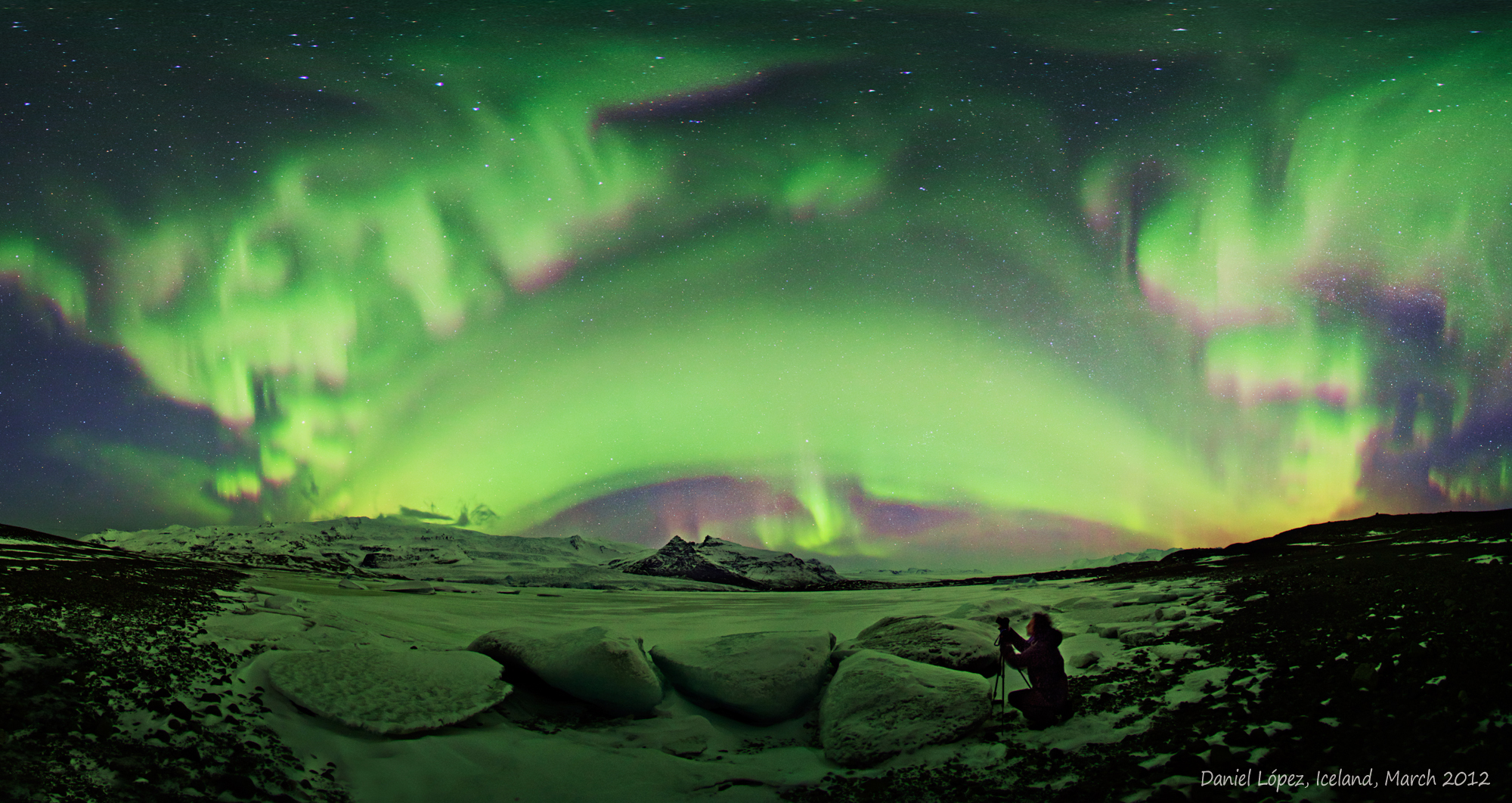The aurora borealis (aka the Northern Lights) is a spectacular natural
phenomenon caused by particles of solar wind as they hurtle towards Earth and
interact with chemicals in the atmosphere. Less well known but equally trippy
is the aurora australis (or the Southern Lights), visible from the southernmost
regions of the Southern Hemisphere.

These flashy displays of dancing lights are a lucrative tourist
attraction for countries like Norway and Iceland but can be a bit of a nuisance
– at least, that is, if you are a flat-Earther. This is because for the aurora
to exist in a flat world, you need to ascribe to some fairly weird physics.
Specifically, physics that does not require a north and a south pole and a
spinning, spherical Earth.
The reason the northern (and southern) lights exist (other
than in rare circumstances) exclusively around the poles is due to the
Earth’s magnetic field, which causes the solar particles to converge at the
northernmost and southernmost latitudes. Here, they mingle with oxygen and
nitrogen particles, releasing the photons that form the famously exuberant
rainbow-colored auroras. Interactions with oxygen typically cause either yellow
and green light, whereas interactions with nitrogen result in purplish-red,
violet, and (slightly less frequently) blue colors. The brightness of the
lights at any one time correlates to the movement of the solar wind particles
and the oscillating magnetic field lines.

This brings us to the spinning, spherical Earth. As conventional physics
will tell you, the magnetic field required for the aurora is produced by the
constant flow of liquid metal in the Earth’s outer core – a process called the dynamo
effect. This flow generates electric currents, which – when prompted by the
rotation of the Earth on its axis – form a magnetic field around the planet.
And so, what would happen if the world was to stop spinning?
Well, according to NASA, “If the
Earth stopped rotating, its magnetic field would no longer be regenerated.”
That means no more Northern Lights. Or, for that matter, Southern Lights. It
would also leave every single living thing on the planet vulnerable to the
extremely high levels of radiation that emanates from the Sun. Fortunately for
us, it is extremely unlikely to happen any time soon.
For our health and auroras, we need a magnetic field and, therefore,
a globular planet. But not to let a small thing like science get in the way,
flat-Earthers have their own explanation for the magnetic field (which you can
read here)
and the Northern and Southern Lights.
According to The Flat Earth
Wiki:
Auroras are believed to be caused by charged high energy particles from the solar winds that are trapped within the magnetic field of the Earth. As these charged particles spiral back and forth along the lines of the magnetic field, they become visible nearest to the north and south magnetic poles where these magnetic lines become vertical and interact with the atmoplane of the Earth.
Auroras, both the northern and southern lights, can most frequently and easily be seen during the winter months within a 2500 km radius of the vertical magnetic field lines. This area is also known as the auroral zone.
Comments
Post a Comment